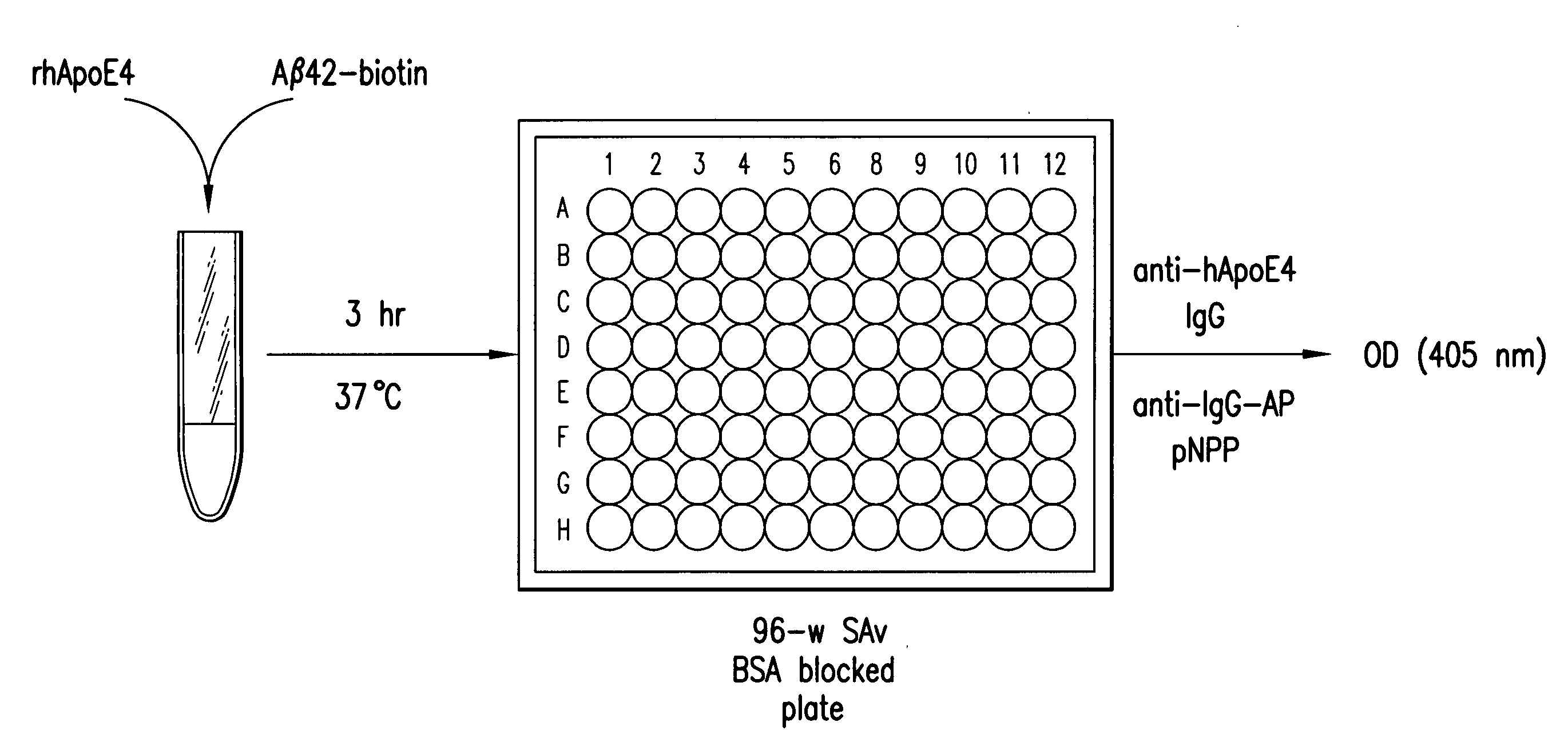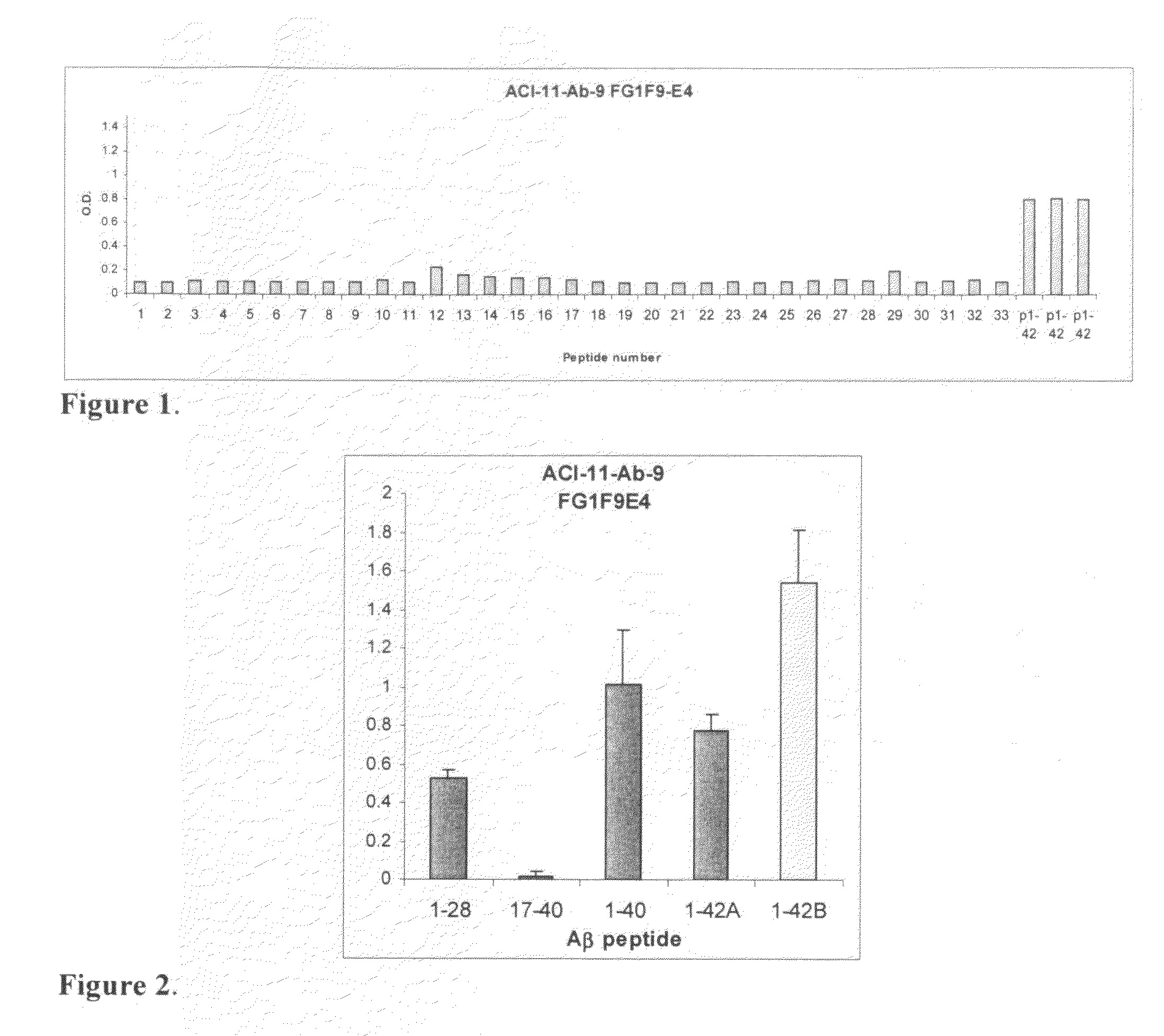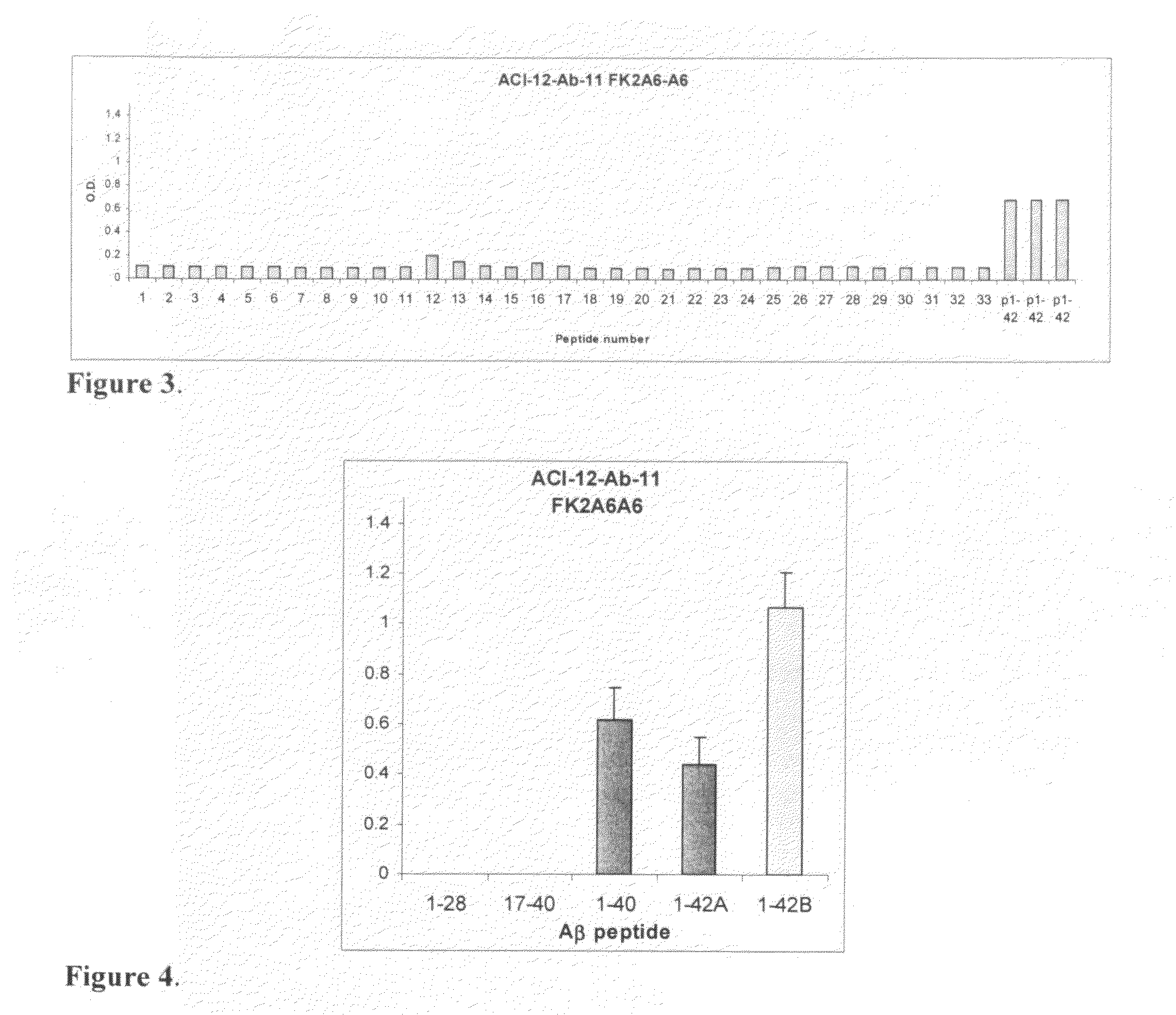Monoclonal antibody
a monoclonal antibody and antibody technology, applied in the field of monoclonal antibodies, can solve the problems of not being able to solve simple math problems, individuals may forget recent events, activities, and the names of familiar people or things, and achieve the effect of improving exposure and stabilizing
- Summary
- Abstract
- Description
- Claims
- Application Information
AI Technical Summary
Benefits of technology
Problems solved by technology
Method used
Image
Examples
example 1
Methods for Making Supramolecular Antigenic Constructs
Synthesis of Pegylated β-Amyloid Peptide Antigen
[0319]To enhance the immune response, an anchor / spacer has been applied to reconstitute the peptide in the liposome, e.g. polyethylene glycol (PEG). PEG was covalently attached to the lysine residue bound at both termini of the peptide. At the other end of the chain (PEG n=70) phosphatidyl ethanol amine (PEA) was covalently bound to function as the anchoring element in the liposome bilayer. Thus, the liposome still functions as an adjuvant and the peptide being sufficiently far away from the bilayer can be processed alone and thus increases its immunogenicity as compared to the palmitoylated antigen.
[0320]The supramolecular constructs described herein were uniquely synthesized using standard Fmoc / tBu amino acid side-chain protections. Typically, pegylation of peptides results in mixtures of regioisomers. Herein a convenient method for the site-specific attachment of a PEG-lipid conj...
example 2
Antibodies Elicited by Supramolecular Antigenic Constructs
[0326]Manufacturing of mAbs Raised Against Pegylated Aβ22-35 and Aβ29-40 Supramolecular Antigenic Constructs:
[0327]Liposomal antigens were prepared as described (Nicolau et al., 2002, PNAS, 99, 2332-37). The sequences PEG-Aβ22-35 and Aβ29-40 were reconstituted in a construct consisting of liposomes made of dimyristoyl phosphatidyl choline (DMPC), dimyristoyl phosphatidyl ethanolamine (DMPEA), dimyristoyl phosphatidyl glycerol (DMPG) and cholesterol (0.9:0.1:0.1:0.7 molar ratios) containing monophosphoryl lipid A (40 mg / mM phospholipids). These antigens were used for the immunization in C57BL / 6 mice in 2 week intervals. 10-12 animals were immunized with each antigen. After 3 to 6 boostings, mice with therapeutic titers (when a 1:5,000 dilution of the sera were positive in ELISA) were selected for a fusion. Spleen cells are harvested from the immunized animals and hybridomas generated by fusing sensitized spleen cells with a my...
example 3
Specificity Determination for Antibody ACI-11-Ab-9 and ACI-12-Ab-11
[0331]To analyze the specificity of the antibody ACI-11-Ab-9 and ACI-12-Ab-11, different concentrations of pre-formed Amyloid 1-42, 1-40 and 17-40, 1-28 fibrils are blotted onto Hybond ECL Nitrocellulose Membrane (Amersham Biosciences). After blocking with 10% dry milk and 0.7% Tween 20, membranes are incubated with primary antibody at 20 μg / ml for 2 h at RT. After washing, membranes are incubated with horse radish peroxidase conjugated sheep anti-mouse IgG antibody (Amersham Biosciences) for 1 h at RT, washed and incubated with cheminluminescent solution followed by the exposure of the membrane to X-ray film.
[0332]To measure binding of the mAb ACI-11-Ab-9 and ACI-12-Ab-11 to amyloid β 1-42, 1-40 and 17-40, 1-28 fibers are pre-formed for seven days at 37° C. and blotted on the membrane. 20 μg / ml antibody is used to measure binding capacity and the bound antibody is detected by horse radish peroxidase conjugated sheep...
PUM
| Property | Measurement | Unit |
|---|---|---|
| Fraction | aaaaa | aaaaa |
| Fraction | aaaaa | aaaaa |
| Fraction | aaaaa | aaaaa |
Abstract
Description
Claims
Application Information
 Login to View More
Login to View More - R&D
- Intellectual Property
- Life Sciences
- Materials
- Tech Scout
- Unparalleled Data Quality
- Higher Quality Content
- 60% Fewer Hallucinations
Browse by: Latest US Patents, China's latest patents, Technical Efficacy Thesaurus, Application Domain, Technology Topic, Popular Technical Reports.
© 2025 PatSnap. All rights reserved.Legal|Privacy policy|Modern Slavery Act Transparency Statement|Sitemap|About US| Contact US: help@patsnap.com



